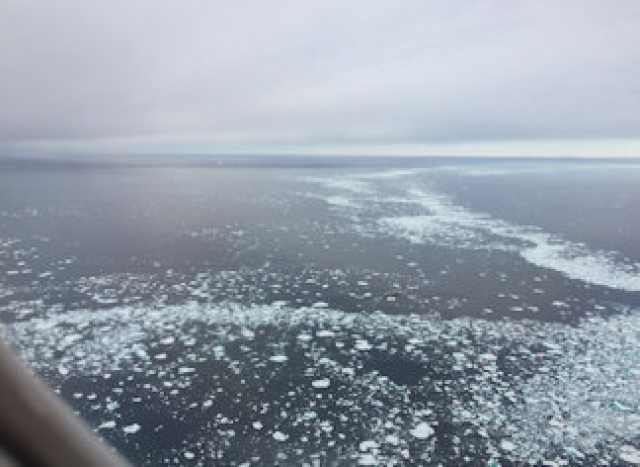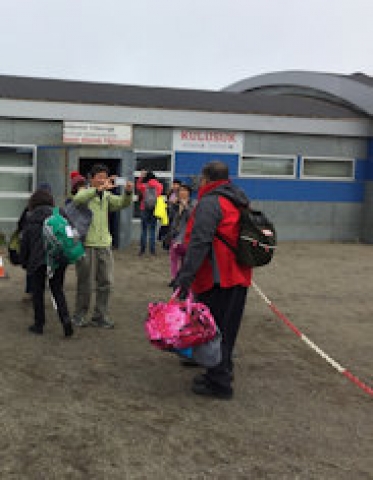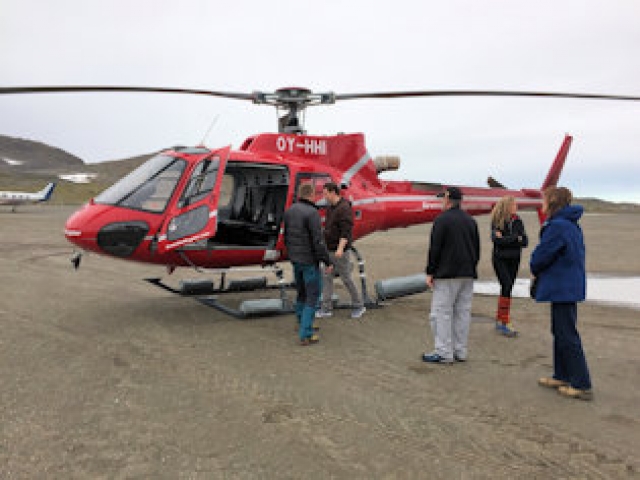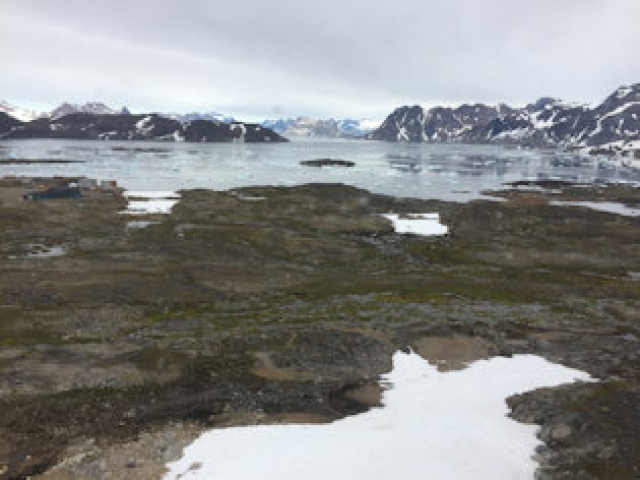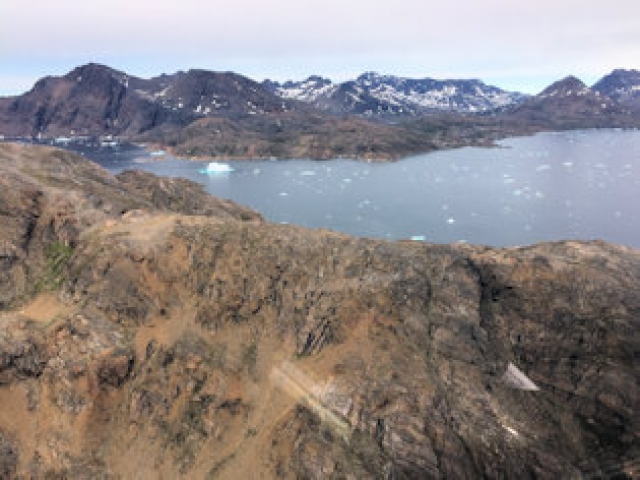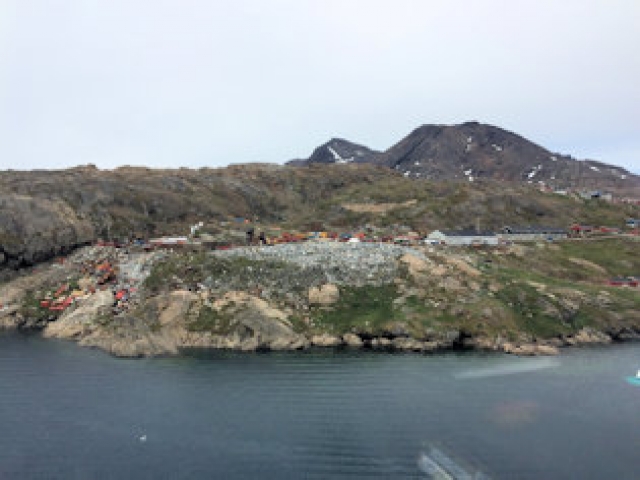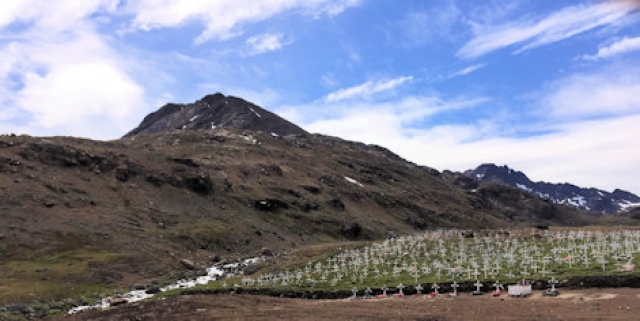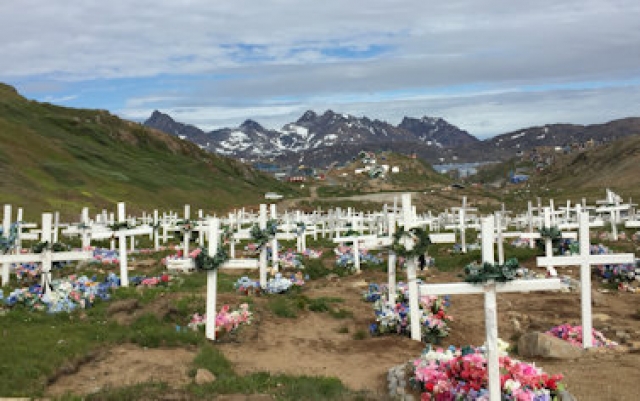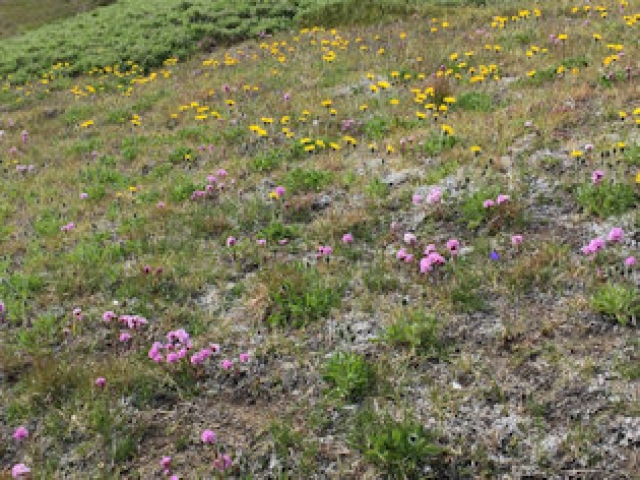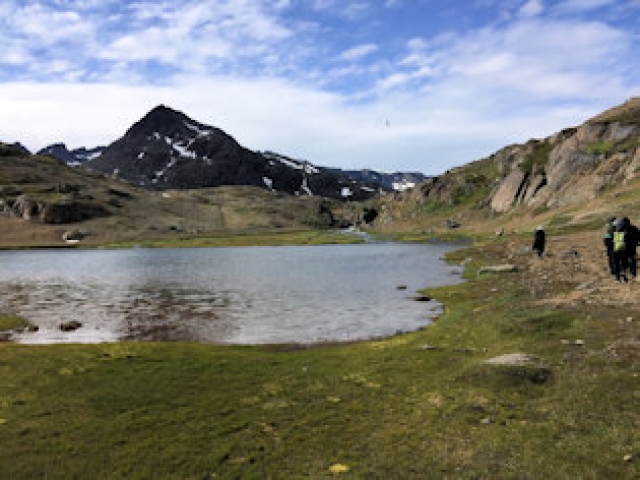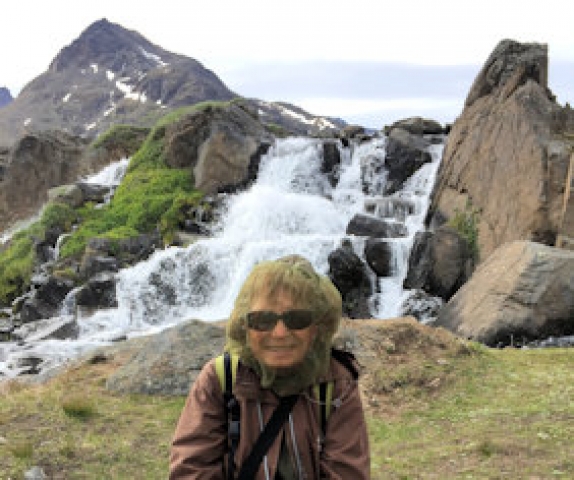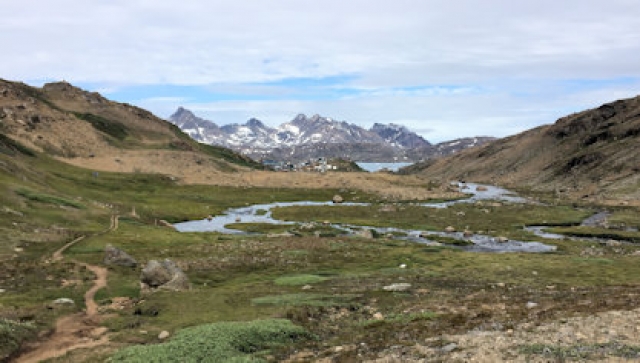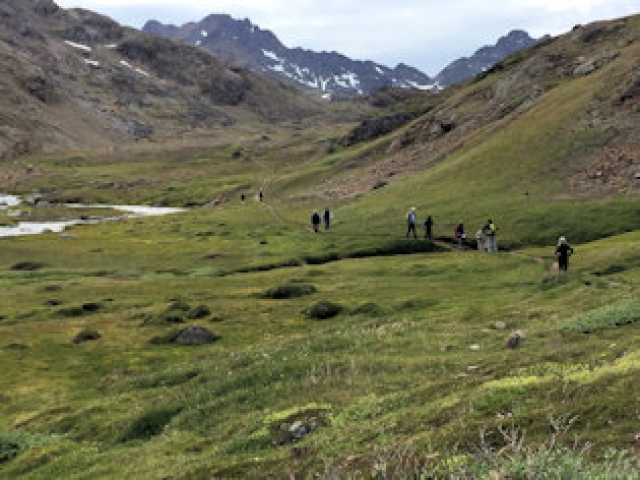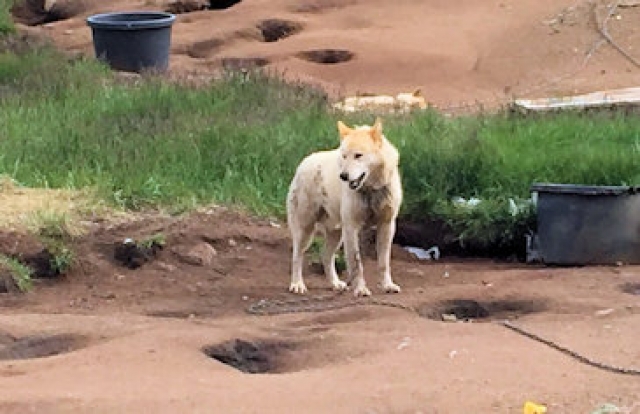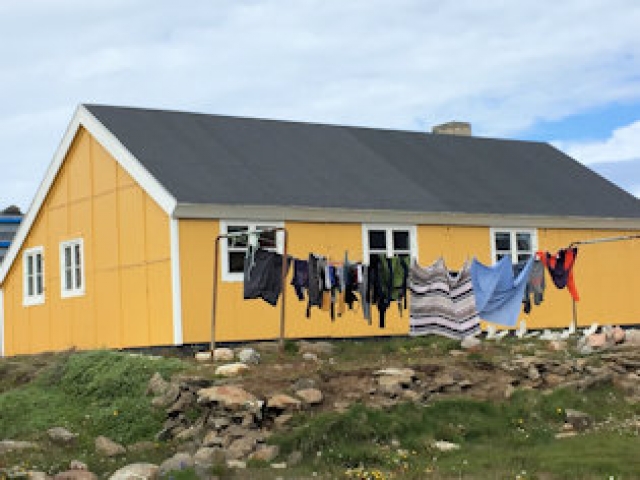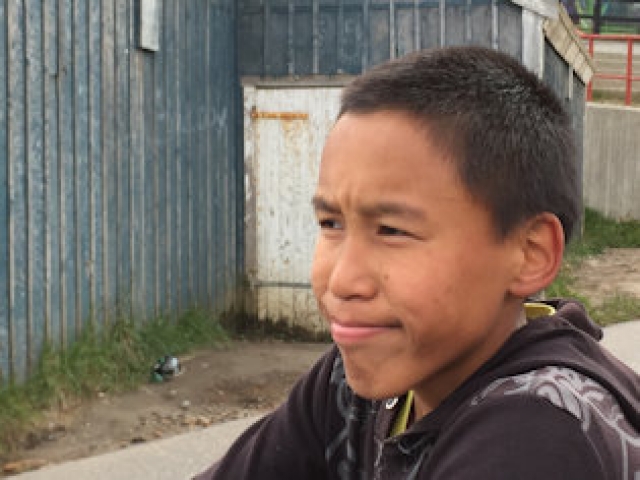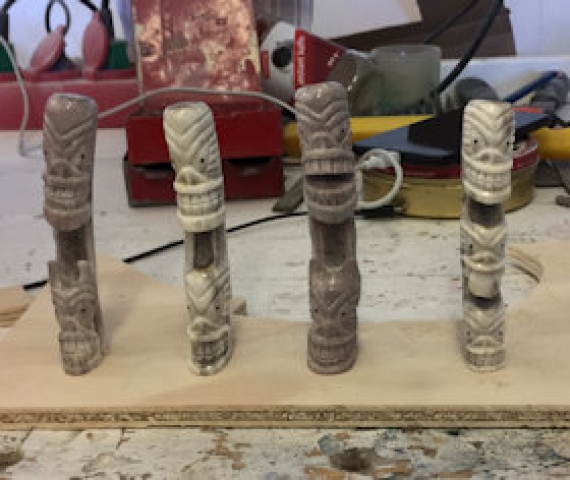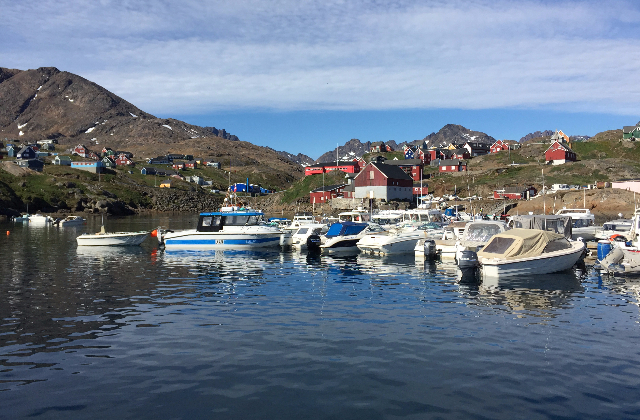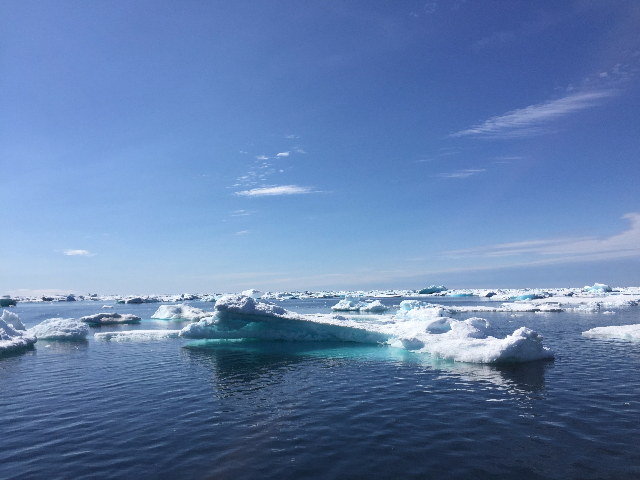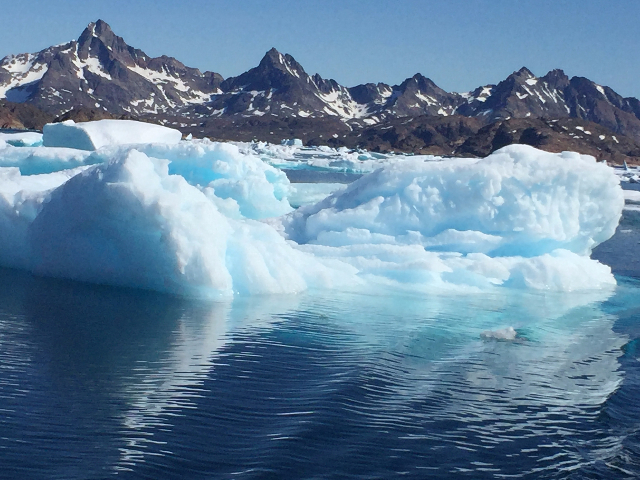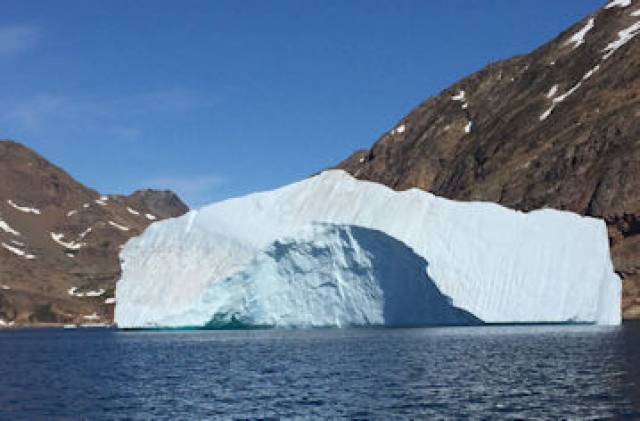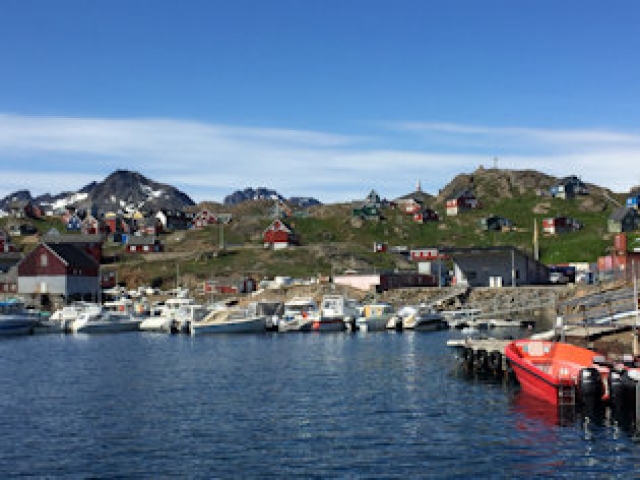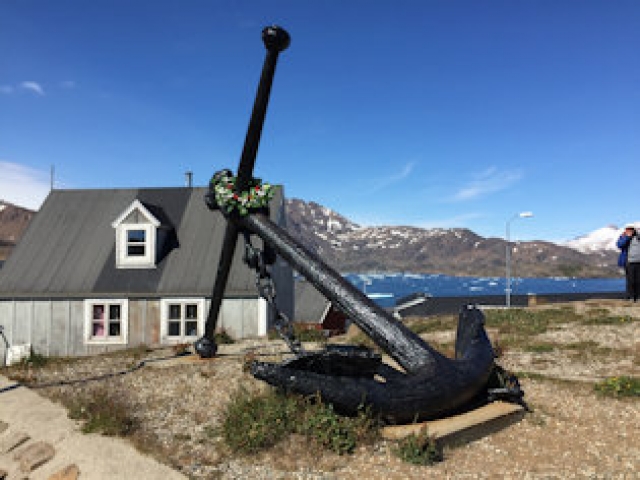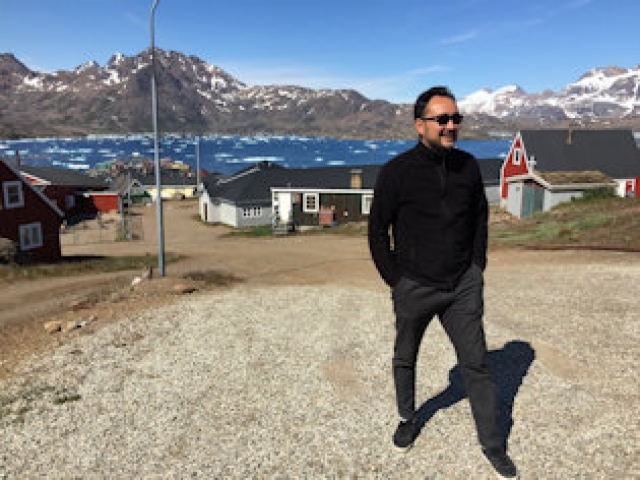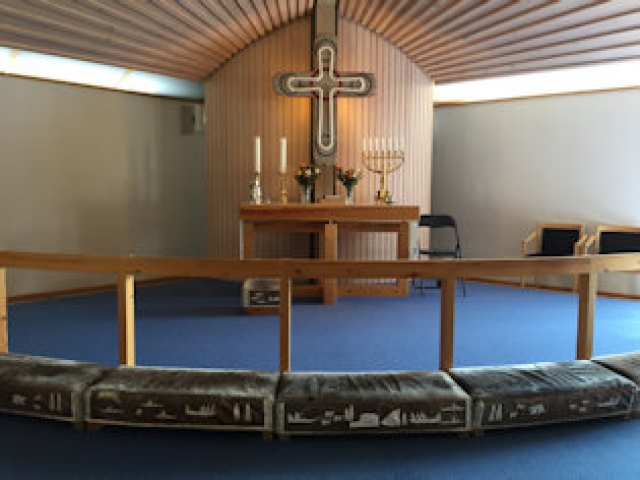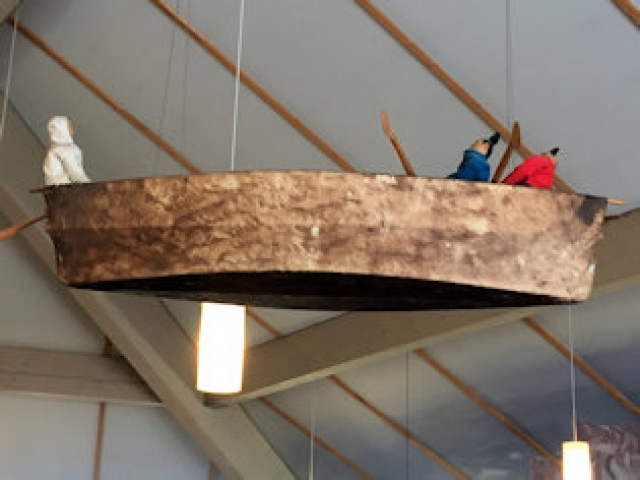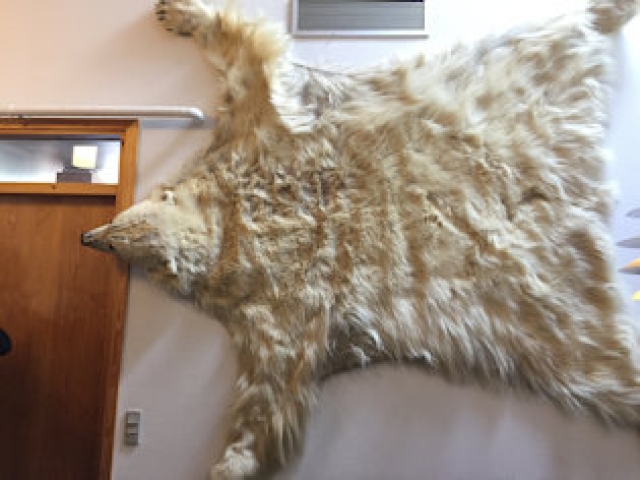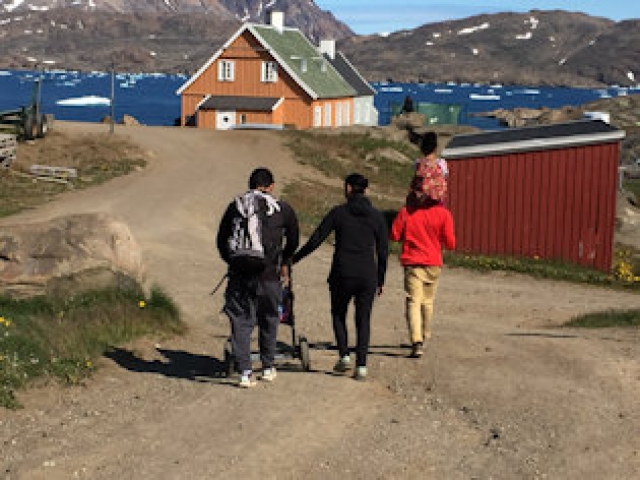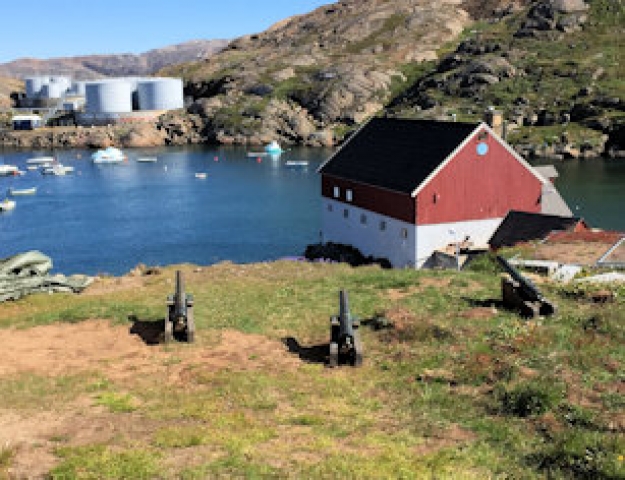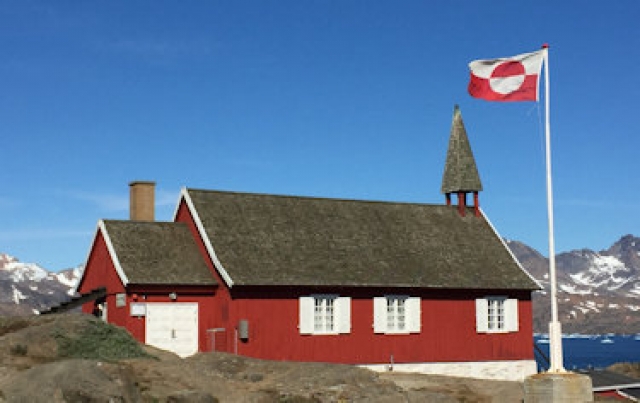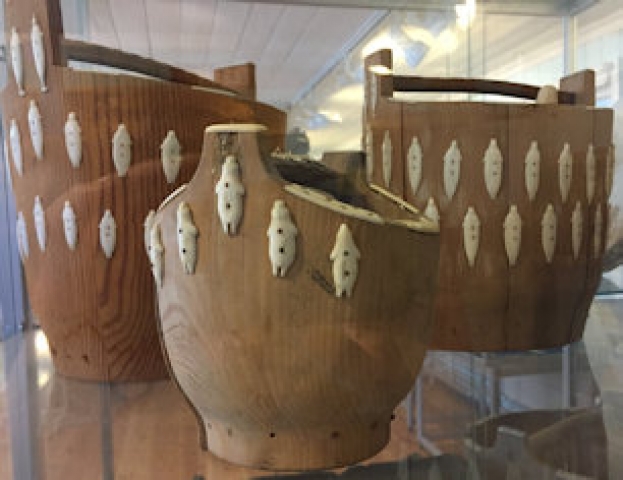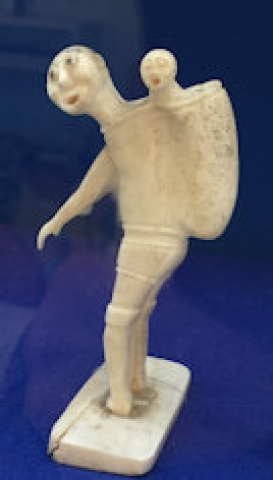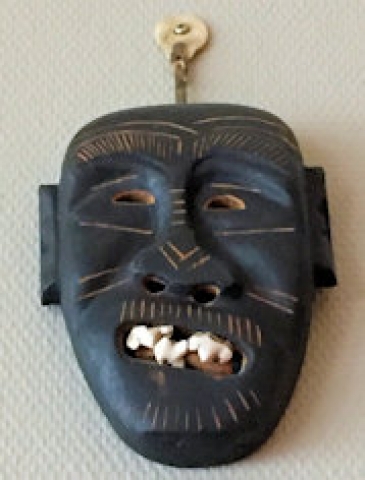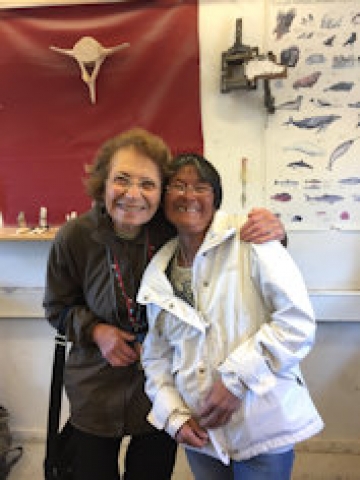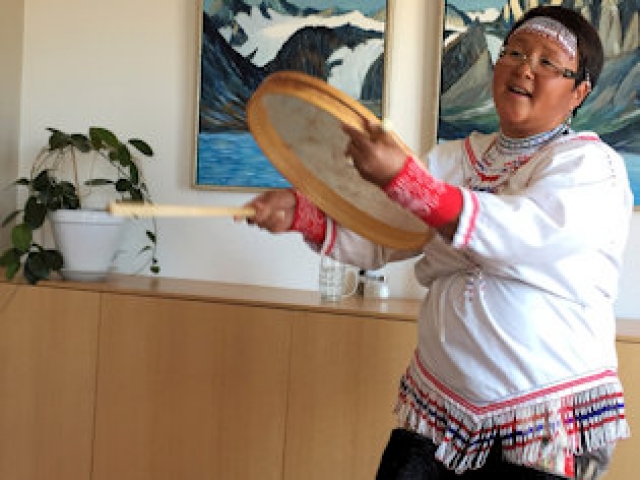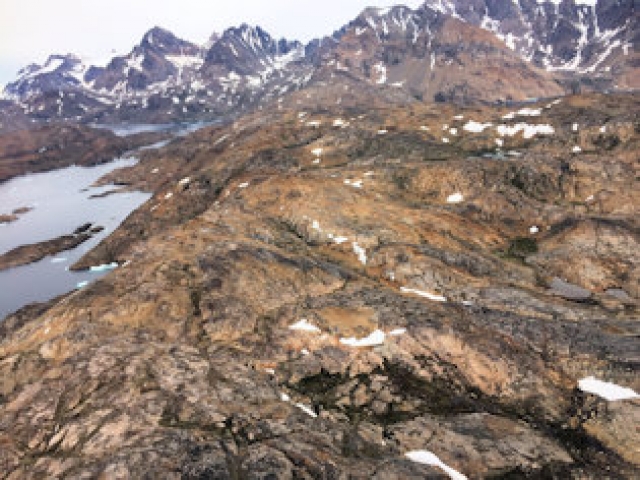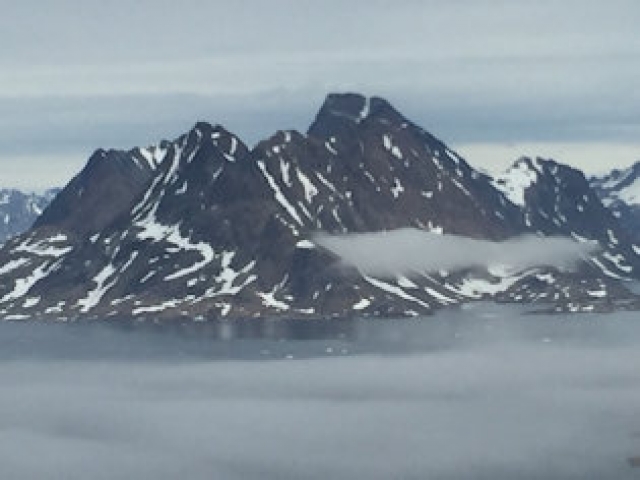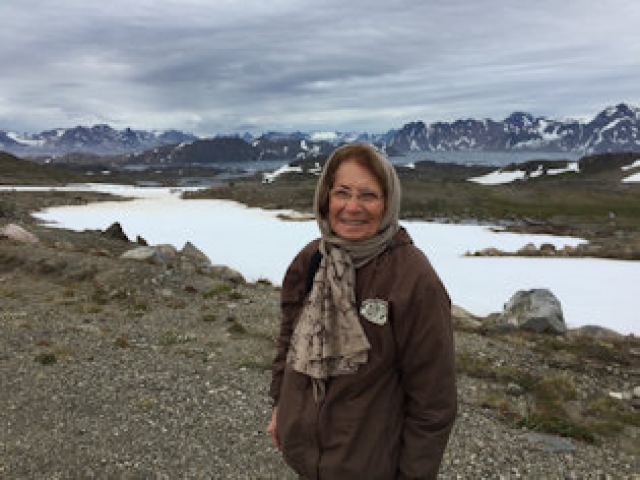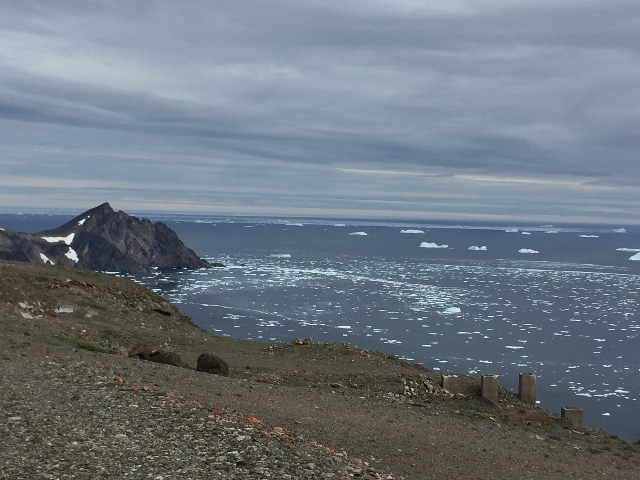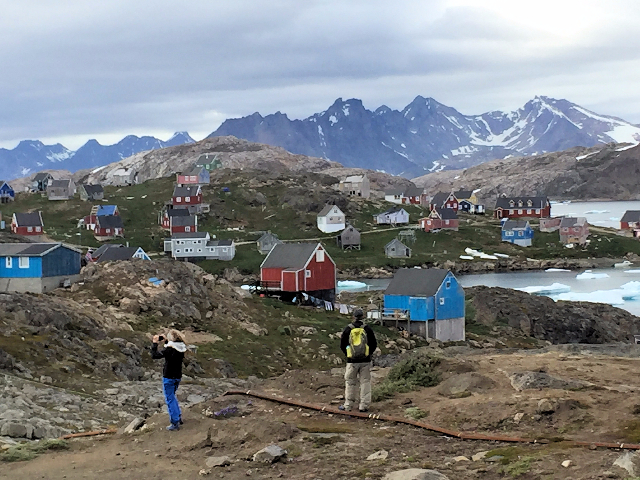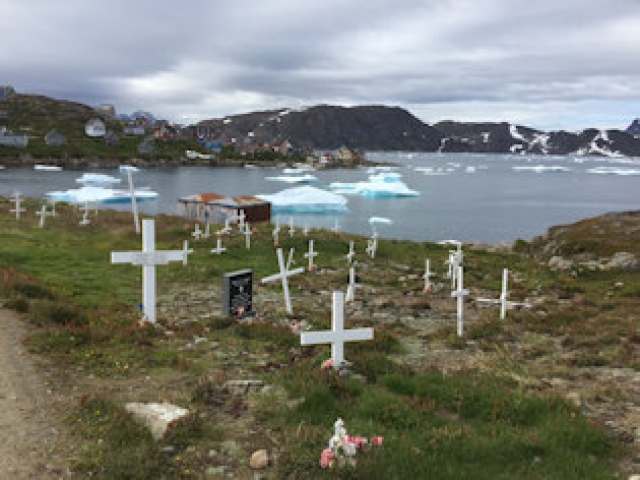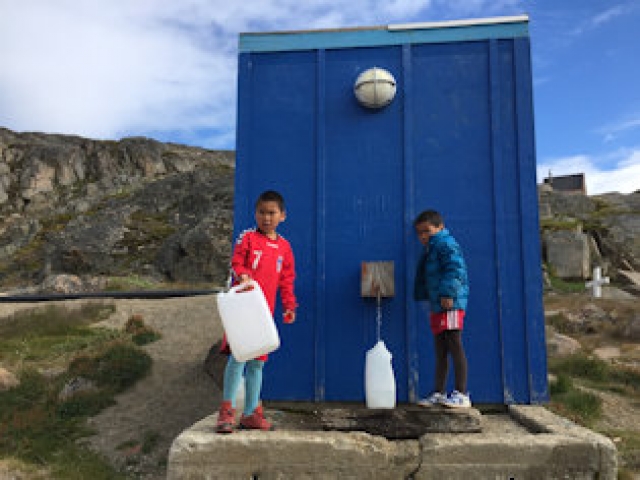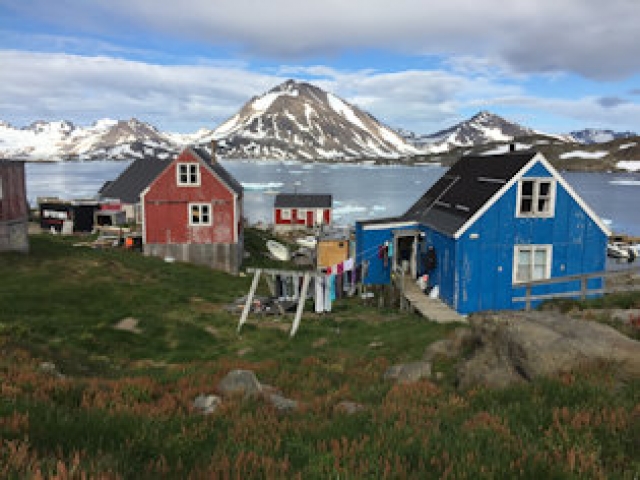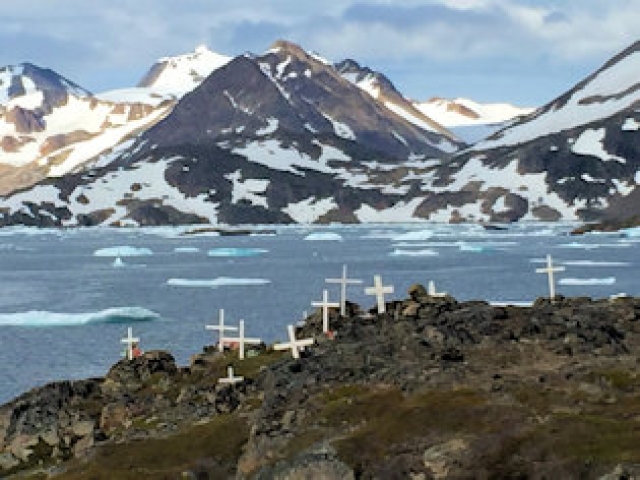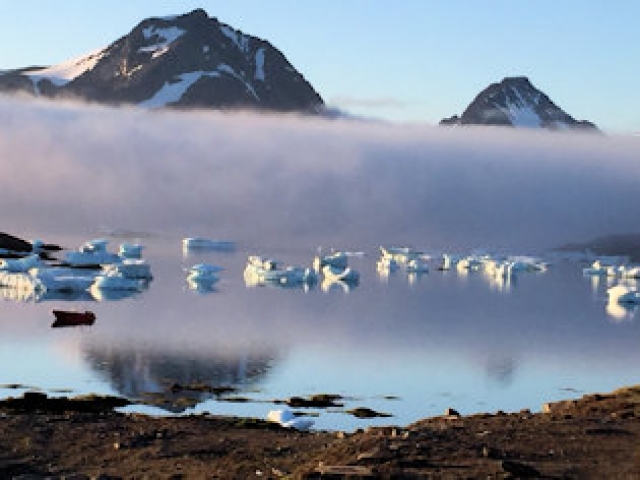Greenland
A journey South of the Polar Circle
By: Zeren Earls - Sep 13, 2017
At the end of the Iceland adventure, four people in the full group of fifteen returned home, leaving the rest of us behind for a four-day discovery of Greenland. Taking only hand luggage, we flew west from Reykjavik to Kulusuk in East Greenland, gaining two hours during the one-and-a-half-hour flight over the North Atlantic. As the plane approached the east coast of Greenland, floating pieces of winter ice broken from the sea around North Greenland and the North Pole, called pack-ice, emerged on the ocean below, stretching as far as the eye could see. After landing at the Kulusuk airport, we had to switch to a helicopter to cross the mountains and reach our final destination, the town of Tasiilaq on Ammassalik island at the mouth of Ammassalik Fjord.
One helicopter had to make three separate trips to get us to Tasiilaq, as it could accommodate only 4-5 people at a time, making it clear why we had had to leave our main luggage back at the hotel in Reykjavik. Opting to go in the last group for the 20-minute copter ride, I sat next to the pilot as he took off toward snow-splattered serrated mountains by the ocean, dotted with pack-ice. Shortly after we crossed the mountains, Tasiilaq, nestled by Ammassalik island, appeared. The views we enjoyed from the air continued on land after we arrived at Hotel Ammassalik, named after the eponymous island just south of the Arctic Circle. The hilltop hotel’s terrace overlooked majestic mountains across the way and colorful houses of the town below, with views of the fjord and its floating pack-ice. This splendid view along with a buffet lunch refreshed us for an afternoon walk to the Valley of Flowers to view the arctic flora.
Heading out of town, we entered the river valley by a beautifully situated cemetery, marked only by white-painted crosses against a mountain backdrop. The tombs, covered in colorful artificial flowers, were not identified by name, because of the Inuit belief that names are passed on to others born in the village and therefore should not be buried. Sometimes, the next baby born will be given the name of the deceased even if there is no family connection; thus establishing a bond between those families. Following a rough track through the valley, carpeted with green grass, at a leisurely pace, we passed by lakes and waterfalls, stopping to enjoy the variety of tiny flowers along the way. Tiny black flies swarmed around, necessitating the wearing of head nets, as repellents proved ineffective.
On our return, we saw packs of chained hunting dogs on the outskirts of town; these are used for dog sledding, a common means of transport in the winter. The Greenland dog is a powerful, heavy-built dog with a coat of medium length consisting of two layers – an inner layer of short fur and an outer layer of longer, coarser, water-repellent fur. The dogs are kept chained, as they are working animals, not pets.
Back at the hotel for dinner, we were treated to baked trout, rice and mixed vegetables, and for dessert lemon cream cake, its shape inspired by the surrounding mountains. Afterwards we watched a film about Inuit culture, made by a Danish explorer in 1934 and told as a story of love for a young woman. Two men compete for her attention by showing off their masculinity as they kill a polar bear. Depicting nomadic life, with free-spirited children becoming jealous young adults, the film also provided an insight into shamanism.
In the morning, I walked downhill to the craft shop near our hotel to see the work of the carvers, famed for making tupilaqs, an avenging shamanistic object used by the Inuit. These objects, carved out of bone, horn, antlers, soap stone or wood, have become a major souvenir item from East Greenland. However, since I already had a tupilaq purchased in Denmark some years ago, my attention turned to beadwork hanging on the wall. Charmed by a small beaded wall hanging of an Inuit native outfit, complete with boots, I was told to come back later to meet the craftswoman who had made it; naturally I complied.
The big excursion of the day was going to the harbor for a boat tour among the pack-ice and icebergs. As we cruised amid nature’s wonders, a closer look at the tough sea-ice, built up from many winters in the polar ocean, revealed blue and green stripes where melt water from glaciers had run into crevasses, thus creating reflections of translucent colors in the clear waters of the fjord – a fascinating tour indeed, though weather-dependent due to special Arctic conditions.
Accompanied by a local guide, a walking tour of Tasiilaq informed us about East Greenland’s largest city, with a population of 1,900. Starting at the town’s pentagonal Lutheran Church, built in 1985, hand-crafted illustrations of people in boats on kneelers of seal skin recalled the arrival of the Inuit on the island. Hanging from the ceiling of the sanctuary, a boat made of seal skin and carrying seated figures with paddles underscored people’s dependence on the sea, while a bear skin by the main entrance pointed to their reliance on hunting. The cross and baptismal font were made of driftwood. Transported in the old days by the sea current from the large forests of Siberia, this was the only source of wood, and consequently a great treasure. Nowadays wood is shipped from Denmark, the country responsible for Greenland’s economic well-being.
The difficulty of getting goods into town became apparent when we came upon three cannons on a hill overlooking the harbor, which is navigable only from May to October. The remainder of the year the harbor is blocked by ice, making it impossible for supply ships to pass through. Therefore, a cannon salute announces to the townspeople the arrival of the first boat from Denmark in the spring. People must stock up for seven months of the year; otherwise they cannot even have bread if they run out of flour.
The town’s first church, dating from 1908 and standing high above the harbor, has been restored and now houses the Ammassalik Museum, which displays a collection of objects relating to Greenland’s ancient and recent history. Displays of local artwork and artifacts shed light upon how the Inuit managed to reach the area from the north as they followed the migration of seals and bears for hunting. The exhibits range from dogsleds and water buckets decorated with tusk and bone to beaded native outfits and tupilaqs.
Learning about local culture continued back at the hotel, where we watched an Inuit drum dance. In this dance, the drummer approaches a person in a communal circle, to settle a dispute by drumming in front of her in an invitation to dance. Drawn to the center of the circle, the pair settle their dispute through movement and music instead of shouting or fighting. A volunteer from our group accepted the invitation to dance.
Dinner at the hotel consisted of tomato soup with fish balls, cod accompanied by carrots and potatoes, and ice cream with nougat for dessert. After purchasing a T-shirt displaying our geographic location (65.6 N 37.6 W) on a map of Greenland at the hotel gift shop, I retired to my room, despite the fact that there was still daylight at midnight. In the summertime Greenland enjoys 21 hours of daylight a day; an eye mask is recommended for those used to sleeping in the dark.
In the morning, we took a helicopter ride back to Kulusuk, East Greenland’s second largest settlement, with a population of 277. Met by a local guide, we traveled to Hotel Kulusuk, 40 minutes away from the airport, and spent one night there before returning to Reykjavik.
Following a buffet lunch at the small hotel with only 34 rooms, our sight-seeing began at a radar station, installed on top of a hill by US forces during World War II. Home to 30 men, the station was later dismantled when the Berlin Wall came down. With a panoramic view of the surrounding mountains as a backdrop, I was even able to make myself a snowball here.
A walkthrough town provided insight into residents’ living conditions. Many of the colorful houses, made of wood brought by the Danes and insulated to protect the diminishing population, had peeling facades due to the harsh weather. White crosses above graves appeared randomly by the sea or the roadside, depending on where a patch of land was available on the rocky terrain, according to our guide, who spoke very good English she had learned at school. Greenland has ten years of compulsory education; Danish, English and the Western dialect, spoken in West Greenland, are required language courses throughout the country. In response to my question about her diet, our guide responded that it was mostly seal. She volunteered the information that her favorite snack was fried whale blubber.
A visit for coffee to the home of a school teacher and his wife, a principal at the same school, was delightful. Collectors of folk art, he had a variety of protective Inuit masks on the walls and she had a vitrine full of tupilaqs given to her as gifts in her position as school principal. The teacher also showed us a children’s game with hunting dogs, carved out of bone, that their son used to play with. Sharing my interest in folk art, our host offered to take us to his museum and shop, where he sold work by contemporary craftsmen. Restraining myself, I purchased only a very small wooden mask.
In all my travels, Greenland is probably the most remote country I have visited. In addition to learning about this unique culture and the traditional ways the people adhere to due to their isolation, I came away admiring their resilience to the limitations of their environment and their ability to find contentment and joy within it.


